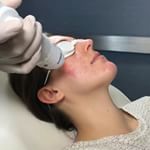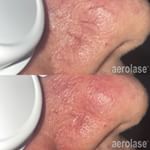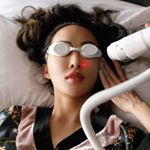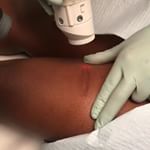In a recent presentation on acne and psoriasis by expert dermatologist, Mark Nestor, MD, PhD reported that a new 650-microsecond light-based therapy showed quicker clearance for each condition as compared to traditional systemic and light-based therapies.
Quick and Tolerable Treatment Option for Acne
Acne, Dr. Nestor notes, is the most common conditions that dermatologists see. There are many treatment options out there, but none have been perfected and some carry a number of side effects. Light-based therapies have not normally been used as a first-line treatment, but are becoming an increasingly useful solution now that a light-based acne treatment is able to work similarly to isotretinoin to effectively reduce sebum production and suppress inflammation, while also destroying the p. acnes bacteria in the skin.
Dr. Nestor noted that a particular question always arises when discussing cash-based treatments – “Are my patients going to pay for this?” The answer is simple, yes and states “It has a significant cash revenue in [my] practice.” With the rising cost of medications for an acne regimen climbing to over $1,000 per month, the need to routinely take oral medications or apply topical medications daily, needing to wait in order to see results, the need to refill these prescriptions, and the possible side effects of the prescriptions – patients are looking for easier, quicker, and more tolerable treatments that will cost them less in the long-run and offer similar, if not better, clearance.
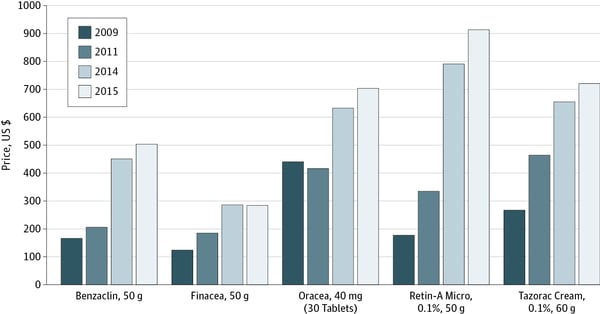
Changes in Retail Prices of Prescription Dermatologic Drugs From 2009 to 2015
PHOTO: JAMA Dermatology
A New Break Through in the Treatment of Psoriasis
Psoriasis, another commonly seen dermatologic condition, shares many of acne's negative social and psychological effects including depression, embarrassment, and feelings of unattractiveness. While acne is primarily seen as an aesthetic condition, psoriasis is very much medical and can be highly painful and both mentally and physically debilitating for patients with it. There are a number of treatment options including acitretin, ciclosporin, methotrexate, biologics, topicals including corticosteroids (one of the most widely used prescriptive medications), and light-based therapy including UVB, PUVA, and lasers.
Biologics have been one of the greatest innovations in the treatment of psoriasis, which help patients with moderate to severe plaque psoriasis achieve clearance. While a major breakthrough for these patients, biologics carry a very expensive price and risk of immunosuppression and may not be a great option for all patients with psoriasis.“We should remember is that severe psoriasis or moderate to severe psoriasis only occurs in less than 10 percent or so individuals with psoriasis,” says Dr. Nestor. “It's certainly not the common majority of people with psoriasis. The majority has limited disease, although it still can be of great concern to them.”
As a new therapeutic option for psoriasis, 650-microsecond therapy works to suppress the inflammation, while coagulating the feeder vessels of psoriasis. The devices suppression of inflammation acts similarly to corticosteroids method of vasoconstriction, but also addresses deeper feeder vessels to take a different, more comprehensive approach. The complete mechanism of action is under investigation.
Dr. Nestor reports that 650-microsecond therapy is effective in treating psoriasis all over the body, but is especially exciting for difficult, recalcitrant cases, including palmar and plantar psoriasis. Plus, compared to traditional light-based therapy like excimer, 650-microsecond psoriasis therapy is showing much quicker results in 2-4 treatments as compared to 10-20 treatments.

Photos: Dr. Zeynep Demirçay, Dermatologist
Results: 14 Days After 2nd Tx (treatment ongoing)
Billing Insurance v. Out of Pocket
Unlike laser acne therapy, laser psoriasis therapy can be billable through insurance. This can help patients save money, while keeping money within the office through reimbursement. Like acne, patient out of pocket costs for prescriptions can be a very expensive. Popular topicals and corticosteroids can run $100 - $500 per tube. Dr. Nestor noted that medical offices do not earn any of the money the patients spend on prescriptions at the pharmacy. In fact, most medical professionals do not know how much their patients are spending out of pocket on acne and psoriasis medications and are surprised to hear what that cost is. Would it not make sense for professionals to give better acne and psoriasis treatment options to their patients, reduce their patients’ out of pocket costs, and help boost their practice’s revenue in a time of declining reimbursement?

Patient Compliance to Rx
PHOTO: Patient Resource
The major advances that 650-microsecond therapy brings for acne and psoriasis including quicker treatment, better, side effect free patient outcomes, reduced patient cost, and better financial return for medical practices are why Dr. Nestor feels “This is a truly revolutionary technology” and will certainly have a great impact on how dermatologists consider treating these conditions.
Want to learn more? Watch a clinical recording of this report from Dr. Mark Nestor and Julie Santos, PA-C below.




